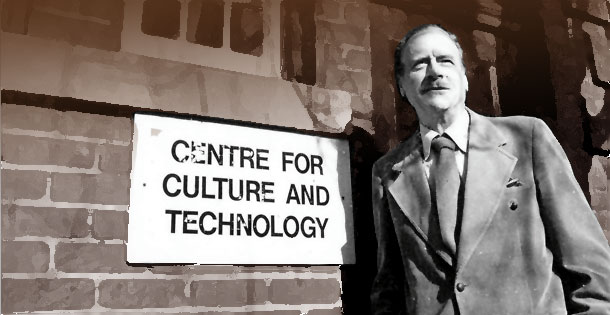
Is the Medium the Message?

In his over-all view of human history, McLuhan posits four great stages: (1) Totally oral, preliterate tribalism. (2) The codification by script that arose after Home in ancient Greece and lasted 2,000 years. (3) The age of print, roughly from 1500 to 1900. (4) The age of electronic media, from before 1900 to the present. Underpinning this classification is his thesis that "societies have been shaped more by the nature of the media by which men communicate than by the content of the communication."
Pursuing this insight into technology's importance, McLuhan develops
a narrower scheme. He maintains that a major shift in society's predominant technology of
communications is the crucially determining force behind social changes. Initiating great
transformations not only in social organization but human sensibilities. He suggests in
"The Gutenberg Galaxy" that the invention of movable type shaped the culture of
Western Europe from 1500 to 1900. The mass production of printed materials encouraged
nationalism by allowing more rapid and wider spread of information than permitted by
hand-written messages. The linear forms of print influenced music to repudiate the
structure of repetition, as in Gregorian changes, for that of linear development, as in a
symphony. Also, print reshaped the sensibility of Western man, for whereas he once saw
experience as individual segments, as a collection of separate entities, man in the
Renaissance saw life as he saw print--as a continuity, often with casual relationships.
Print even made Protestantism possible, because the printed book, by enabling people to
think alone, encouraged individual revelation. Finally: "All forms of mechanization
emerge from movable type, for type is the prototype of all machines."
In "Understanding Media," McLuhan suggests that electric
modes of communication--telegraph, radio, television, movies, telephones, computers--are
similarly reshaping civilization in the 20th century. Whereas print-age man saw one thing
at a time in consecutive sequence--like a line of type--contemporary man experiences
numerous forces of communication simultaneously, often through more than one of his
senses. Contrast, for example, the way most of read a book with how we look at a
newspaper. With the latter, we do not start one story, read it through and then start
another. Rather, we shift our eyes across the pages, assimilating a discontinuous
collection of headlines, subheadlines, lead paragraphs, photographs and advertisements.
"People don't actually read newspapers," McLuhan says; "they get into them
every morning like a hot bath."
See: McLuhan Reconsidered